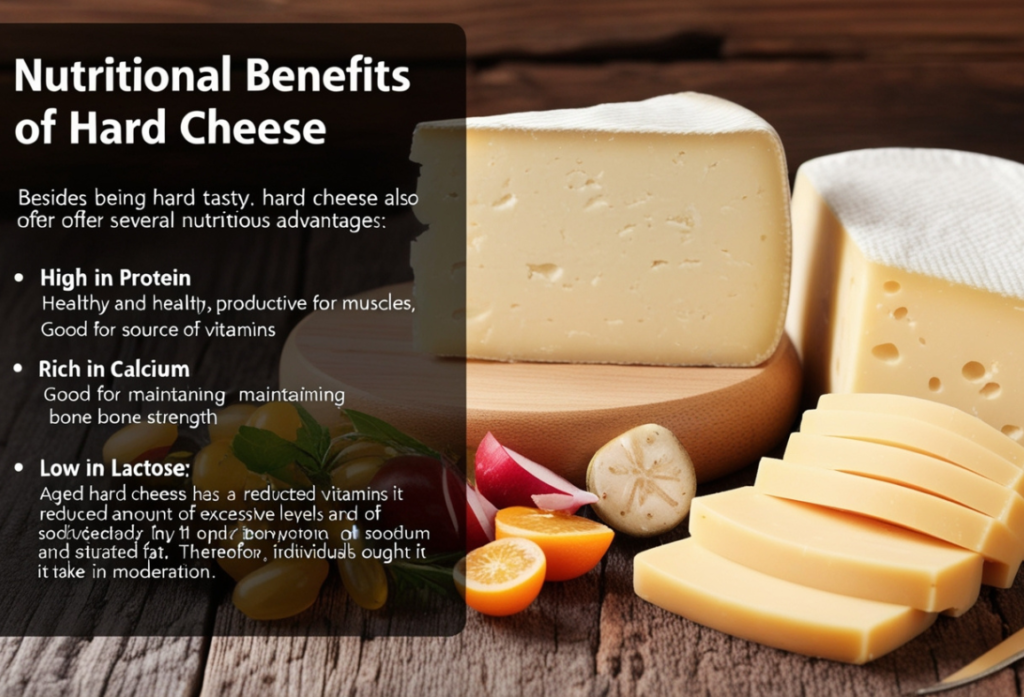Hard cheese is a popular ingredient throughout the world, cherished for its full-bodied taste, long shelf life, and great versatility within cooking. From grating over pasta to enjoying on a cheese board, aged cheese varieties have won their place in global dishes. This guide explores what hard cheese is, how producers make it, the most popular varieties, and how you can use it in your cooking.
Table of Contents
What Is Hard Cheese?
Hard cheese is one type of cheese that producers age for several months or even years. During maturation, it dries out, becoming quite solid and intensely flavoured. Hard cheses tend to be crumbly, salty, and nutty and are therefore ideal to grate or cut into slices.
How Is Hard Cheese Made?

The production process of hard cheese involves several essential stages:
Milk Selection
The milk usually used to make hard-cheese comes from cows, goat, and sheep. Depending on the type of milk used, it will change the way the cheese tastes and its consistency.
Curdling
It is mixed with a bacterial starter culture and rennet to coagulate the milk, and then the curds (solid) and the whey (liquid) are separated.
Cutting and Cooking the Curds
Cheesemakers cut the curds into little bits and cook them to remove additional whey, resulting in a firmer texture.
Draining and Pressing
Once they drain the mixture, they release the curds, press them under weight to remove excess water, and leave the curds in a solid block.
Aging
Cheesemakers typically keep the cheese under care for months on end. The old process improves flavours and becomes hard.
Popular Types of Hard Cheese
Hard cheses are in the dozens around the world, but here are some of the most famous types:
Parmesan (Parmigiano Reggiano)
Parmesan on a coarse Italian cheese is sharp and nutty flavour. Indeed, it makes a delicate finishing touch over pasta or risotto.
Cheddar
Cheddar ranks among the most popular cheeses in the world, and its level of sharpness varies depending on whether it is mild, extra sharp, or aged. Aged Cheddar is a crumbly cheese.
Grana Padano
Like Parmesan, Grana Padano is another type of Italian cheese whose taste is slightly milder; the texture is crystalline.
Pecorino Romano
It is an Italian hard chese made of sheep milk and salty, making it ideal when shaved on dishes like carbonara.
Manchego
A sheep milk cheese that producers can age up to a year, has a rich texture and a buttery, tangy flavour.
Nutritional Benefits of Hard Cheese

Besides being tasty, hard cheses also offer several nutritious advantages:
- High in Protein: Healthy and productive for muscles
- Rich in Calcium: Good for maintaining bone strength
- Good Source of Vitamins: It consists of Vitamin A, B12, and zinc
- Low in Lactose: Aged hard cheese has a reduced amount of lactose; therefore, it is easily digested by many.
Note: Even though hard chese is a healthy food, it can also have excessive levels of both sodium and saturated fat; therefore, individuals ought to take it in moderation.
How to Use Hard Cheese in Cooking
Various dishes may be made with hard chese. The following are common uses of it:
Grated Over Dishes
Top pastas, soups, or salads with Parmesan or Pecorino to add a taste jolt.
Added to Cheese Boards
Serve lobster, cut slices of aged Cheddar or Manchego with fruits, nuts, and crackers.
Baked Into Recipes
Hard chese is good in savoury pies, casseroles, or cheese straws made at home.
Paired with Wine
Red wine, such as the Cabernet Sauvignon or Tempranillo, is ideal with hard cheese.
How to Store Hard Cheese

To preserve hard-cheese fresh and good:
- Cover it directly with cheese and butter paper.
- Put it in the refrigerator’s cheese drawer
- To store longer, vacuum and freeze-seal the items (freezing can cause a slight texture change).
Conclusion
Hard cheese is an ageless meal that boasts an assertive flavour, adaptability, and a long shelf life. If you like grating Parmesan over pasta, enjoying a gnawed slice of aged Cheddar on a cracker, or getting to know the beautiful variety of European cheese boards, there is a hard-cheese for every palate. The use of this type of cheese in your diet will not only add flavour but will also incorporate some sense of the past and opulence in your kitchen.
FAQs
Q1: Is hard cheese healthier than soft cheese?
Ans: Hard cheses are more likely to contain higher amounts of protein and calcium, although they may also contain higher amounts of sodium and fat.
Q2: Is it possible to consume hard chese by lactose intolerant persons?
Ans: Yes, many aged hard cheses have minimal lactose, making them easier to digest for those with mild lactose intolerance.
Q3: How can hard chese be grated best?
Ans: Use a microplane or fine grater for best results, especially for hard, aged varieties like Parmesan.
Q4: How long does hard chese last?
Ans: You can keep hard chese in the fridge for several weeks if you store it properly. Old varieties can even last longer.
Q5: Can you freeze hard chese?
Ans: Yes, but it can alter the texture slightly. You should use thawed cheeses to prepare something, which is ideal.
